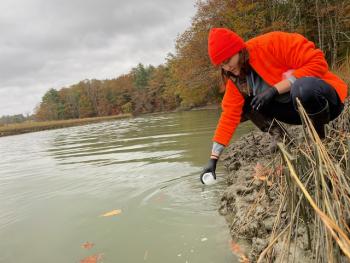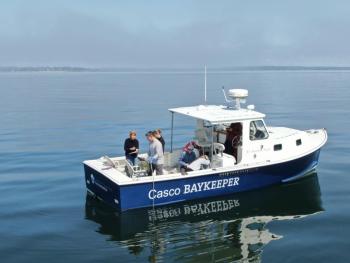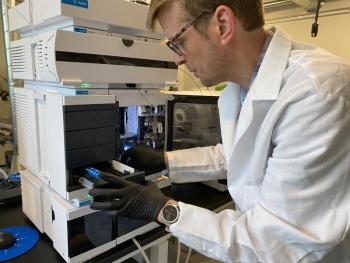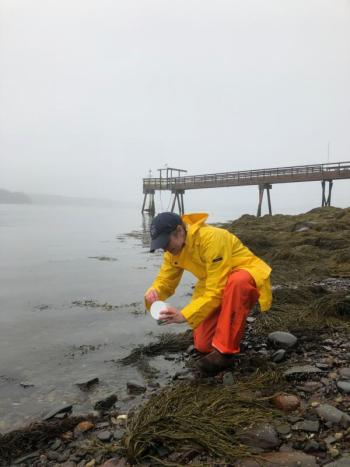Scientists assess PFAS levels throughout Casco Bay
Bigelow Laboratory scientists, alongside partners at Friends of Casco Bay, have assembled the most complete dataset yet of the concentrations of PFAS pollutants, so-called forever chemicals, in the waters of Casco Bay. Their results show widespread — but not alarming — levels of several of these chemicals across the region, highlighting the need for more research into the sources of PFAS and their possible impacts on the marine environment.
PFAS have received significant attention in recent years, particularly in Maine, which has been proactive in monitoring and regulating this persistent and commonly-used family of chemicals. However, until now, there was no comprehensive survey of PFAS levels in Maine’s coastal environment.
“PFAS compounds can travel through water, and we clearly have many different pathways for these chemicals to enter our waterways and flow into the estuary, including both small but powerful sources and widespread, diffuse sources,” said Senior Research Scientist Christoph Aeppli, the project lead. “That said, our results were generally not at an alarming level, and this region doesn’t appear to be any more contaminated than other areas on the East Coast that have been tested.”
“We are truly grateful to Bigelow Laboratory for inviting us into this collaboration,” says Casco Baykeeper Ivy Frignoca. “Until we began this research, we knew so little about PFAS levels in Casco Bay.”
The latest results are the first phase of a multi-year study. The team plans to build upon this preliminary dataset to better understand the primary sources of PFAS into Casco Bay’s water and coastal sediment. That information, in turn, will help state agencies protect local water quality and respond to potential changes in federal regulations.
Meanwhile, Bigelow Laboratory is using its expertise to increase access to PFAS testing in Maine. This spring, the institute will become one of only three Maine-based labs certified to test samples of water and sediment collected by the state for monitoring and regulatory purposes. The institute also intends to offer these complex testing services to other institutions, organizations, and interested parties.
PFAS were detected at all of the study’s monitoring sites, although levels were below current state drinking water standards and appeared to dilute quickly moving further offshore. That said, there were elevated levels close to known sources, including the Brunswick Naval Air Station, an EPA Superfund site since 1987. Those levels decreased quickly, though, moving out into the bay. Surprisingly, levels were also comparatively low around the heavily-urbanized Portland area.
“Before, we didn’t even know how much PFAS there was or how long it takes to dilute in the water, and now we’ve identified some clear patterns across Casco Bay,” Aeppli said. “We can use that insight to begin a more in-depth study on the contributions of individual sources.”
For the current work, funded by Maine Sea Grant, the team collected data from sampling sites across Casco Bay, both close to shore and further out, throughout the summer and fall of 2023. Friends of Casco Bay leveraged their 30-plus years of water quality monitoring and knowledge of the local watershed to guide where and how samples were collected. Those samples were then processed in Aeppli’s lab with a method capable of detecting 40 different PFAS compounds at concentrations akin to a single pinch of salt in a swimming pool.
With a better understanding of the basic distribution and levels of PFAS across Casco Bay, the team can now begin to focus on identifying the contributions of specific sources, which will continue through 2025 supported by funding from the EPA. They’re also planning to do more sampling of sediments along the coast to understand how these chemicals are accumulating in the near-shore environment.
Friends of Casco Bay are also organizing stakeholder meetings to engage with state leaders responsible for water quality to strategize on how to translate this data into solutions and engage with the broader public on educational outreach in the future.
“Now that we have a better basic understanding, we can start more in-depth investigations and expand our testing services to get the data communities and state leaders need to make informed decisions about what actions to take,” Aeppli said.




























